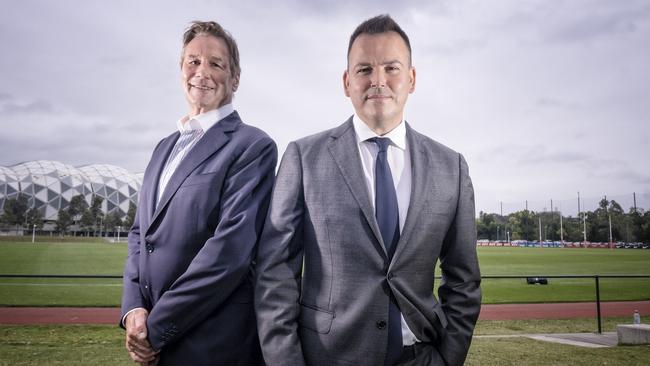Corporate leaders’ $100m diabetes pitch
Business leaders are calling for $100m in the federal budget for insulin pumps and glucose monitors for type 1 diabetics who suffer complications because they cannot afford the equipment.

Business leaders are calling for $100m in the federal budget for insulin pumps and glucose monitors for type 1 diabetics who suffer complications because they cannot afford the equipment.
Qantas and Woodside Petroleum chairman Richard Goyder, former Commonwealth Bank CEO Ian Narev and Collingwood president Jeff Browne are spearheading the campaign by the world’s largest non-profit funder of type 1 diabetes research, JDRF, which estimates funding the equipment would save hundreds of millions of dollars in costs to the health system of managing complications.
Funding for insulin pumps for diabetics is cut off after the age of 18 and funding for continuous glucose monitors after 21 years is restricted to those with concessional status or who are pregnant or planning a pregnancy.
Without subsidised access, continuous glucose monitors and flash glucose monitors can cost up to $5000 for the equipment alone.
Insulin pumps cost up to $8500 over four years without subsidised access. They are accessible via higher tier cover on private health insurance but this is of no help to people without private cover.
“The cost of type 1 diabetes is $2.9bn each year to the health system,” Mr Goyder said. “That’s a combination of everything from assistance to the very significant costs of managing complications from type 1 diabetes. For $100m a year in subsidies you can significantly reduce that number.”
About 127,000 Australians have type 1 diabetes. Complications from the disease if insulin and blood sugar is not controlled include blindness, heart disease, kidney disease, foot problems that can lead to amputation, and nerve damage. The cost to the federal government for each person with diabetes is estimated at $27,000 but that cost is five times greater for those who experience complications.
Glucose monitors and insulin pumps help take the guess work out of managing type 1 diabetes by enabling people to read their glucose levels more easily, more accurately and in real time – so the precise amount of insulin needed can be dispensed. The alternative is manual injections via pens or syringes, and checking glucose levels through finger pricks and blood glucose readers which require multiple finger pricks a day.
Under the $100m proposal, 69,000 diabetics would be eligible for funding for continuous glucose monitors and flash glucose monitors. It also calls for 11,000 extra people be funded for insulin pumps.
Mr Narev, who is currently chief executive of Seek APAC, said the costs of poorly managed diabetes were significantly more than the proposed cost of the subsidies. “This equipment would make an enormous difference to the quality of life of people with type 1 diabetes,” he said.
Mr Goyder has a son, Will, who is 24 and was diagnosed with type 1 diabetes when he was eight. Mr Browne has two adult children with type 1 diabetes. His daughter, Sarah, 38, was diagnosed when she was 15 months old and his son Tom, 39, was diagnosed when he was 30.
Mr Browne said his children were lucky enough to be able to afford superior equipment but many families could not.
“This extra funding makes sense firstly because of the primary objective of saving and improving the lives of tens of thousands of Australians,” he said. “What government would not responsibly spend $100m a year to save the $2.9bn it currently costs the Australian community to deal with the effects of type 1 diabetes?”




To join the conversation, please log in. Don't have an account? Register
Join the conversation, you are commenting as Logout